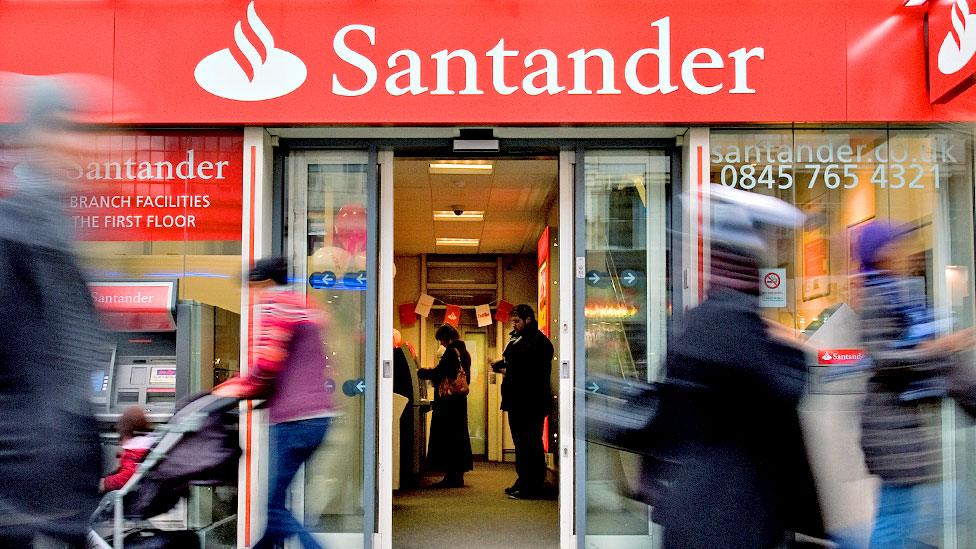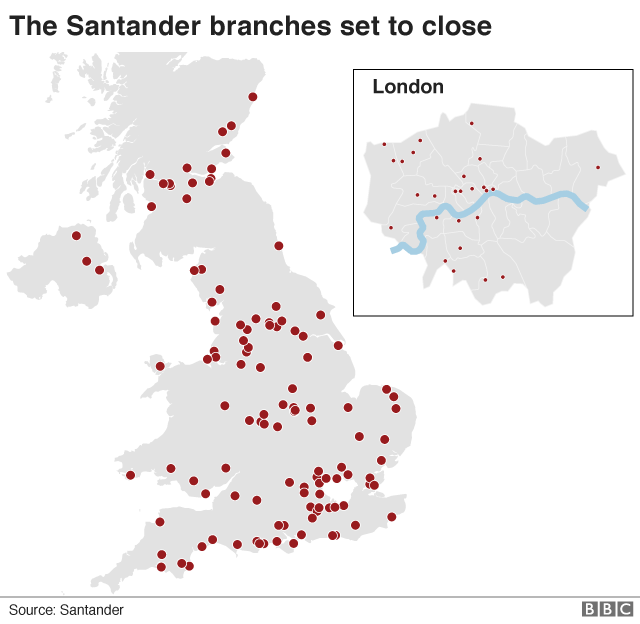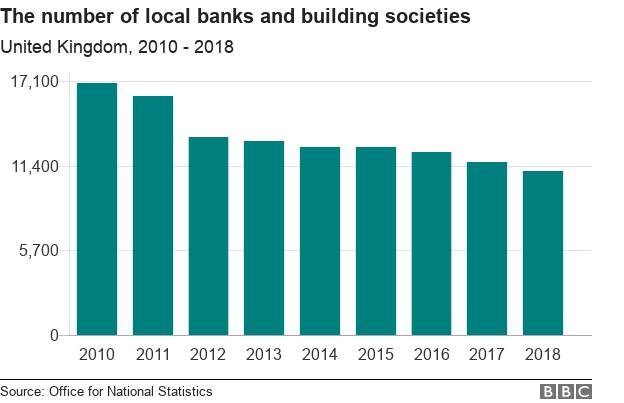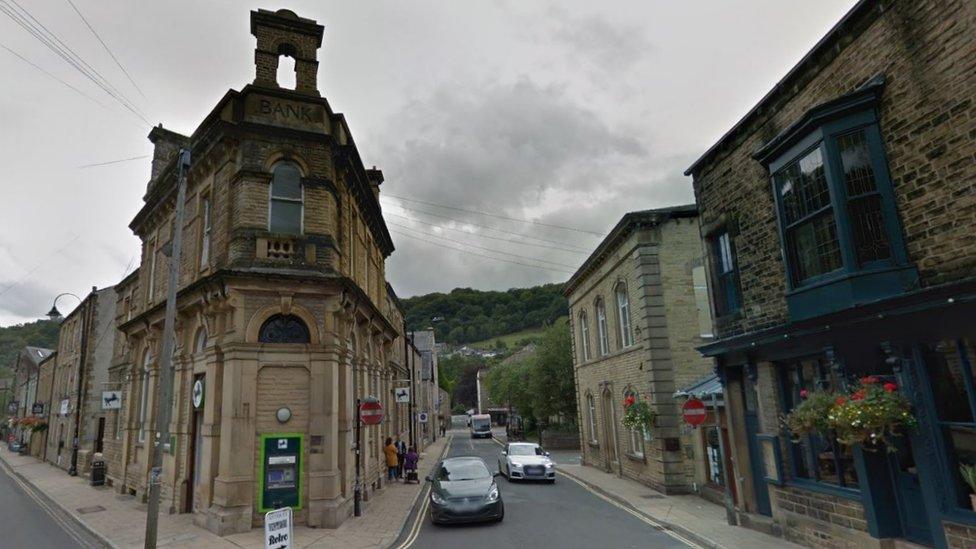Santander to shut 140 branches
- Published
- comments

Spanish-owned bank Santander is slashing its branch network by almost a fifth, putting 1,270 jobs at risk.
The bank blamed the closures on "changes in how customers are choosing to carry out their banking".
It said branch transactions have fallen 23% in the last three years, while digital transactions have soared 99%.
"We have had to take some very difficult decisions over our less visited branches," said Susan Allen, head of retail and business banking.
The bank said its remaining network of 614 branches will be made up of larger branches offering improved community facilities and smaller branches using the latest technology to offer more convenience.
Is your local branch closing? Click here to find out.

New branch vision
It plans to spend £55m over the next two years refurbishing 100 branches to fit its new branch vision.
"We continue to believe that branches have a vital role to play," said Ms Allen.
"We are confident that following these changes we will have the right branch network to serve our customers' changing needs, and we expect the size of our network to remain stable for the foreseeable future."
Santander said it has consulted trade unions on the closures and will seek to find alternative roles for the 1,270 workers hit.
Closure programme
The closures start on 25 April when branches at Bathgate, Bideford, Clitheroe, Corby, Eastcote, Helensburgh, Oakham and two in London will shut their doors.
The shut down programme will continue throughout the year with the last of the planned closures hitting branches in Edinburgh, Guildford, London, Norwich and Nottingham on 12 December.
Britain's High Street banks have been busy shutting down branches in recent years.
Consumer group Which? has calculated that at least 3,101 closures have been announced since 2015, which works out at more than 60 disappearing every month.
Gareth Shaw, head of Which? Money, said: "These closures will come as a blow for all those who rely on access to traditional banking services."
He warned that even though the use of online banking is on the rise, a third of the country still does not bank online.
Mr Shaw also pointed out that recent IT failures shows "such systems are not infallible".
Millions of consumers still need access to cash, he said.
"It is vital for a regulator to be given responsibility for ensuring that people have access to the services they rely on," Mr Shaw said.

Why are banks closing branches?
Figures from the Office for National Statistics (ONS) show that nearly 6,000 local branches have shut since 2010: that's a fall of a third.
It's mainly to do with cost. Maintaining a bank branch and paying staff is an expensive business.
Closing branches and selling the properties can also generate funds that can be used elsewhere in the business.

Customers are also becoming less likely to set foot in a branch, preferring to use their smartphone or computer.
The Way We Bank Now report, published last year by UK Finance, revealed that there were about 5.5 billion log-ins to banking apps in the previous year, up 13%.
- Published15 June 2018

- Published21 January 2019

- Published19 October 2018
